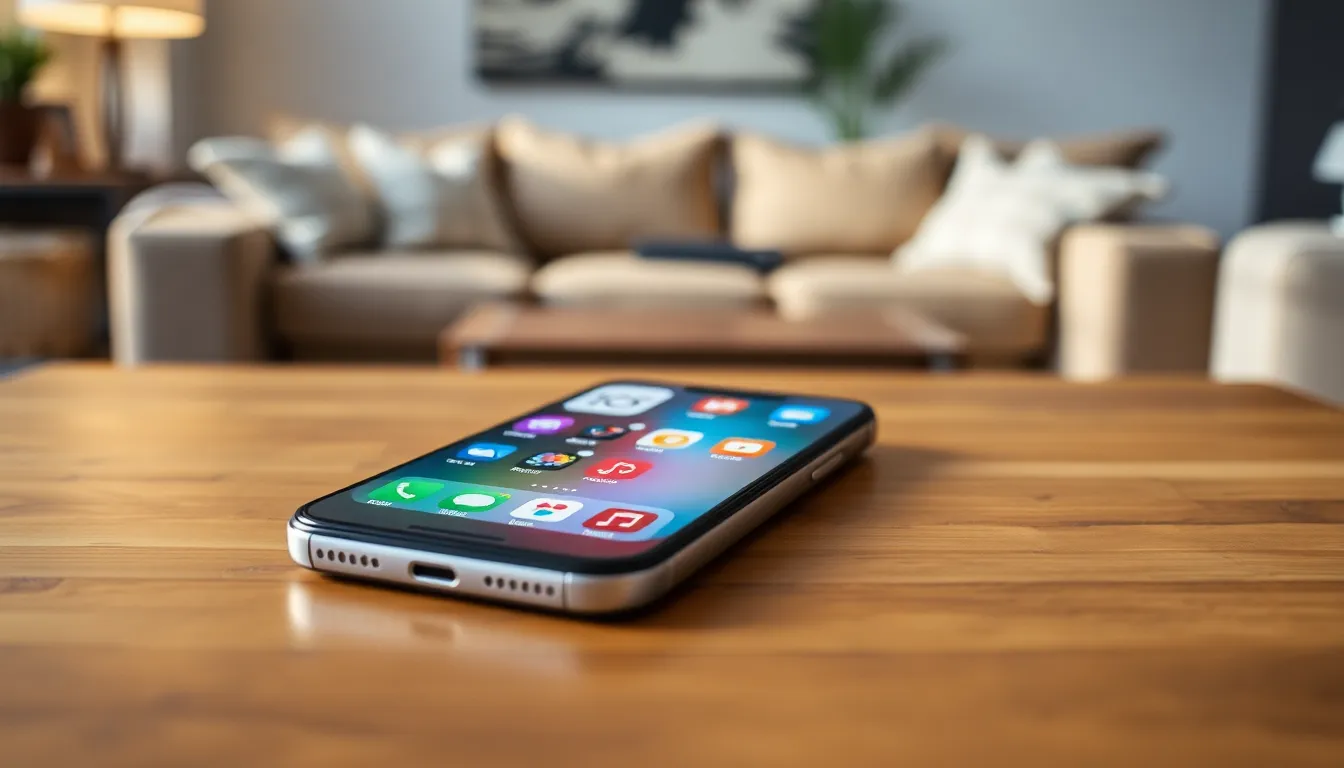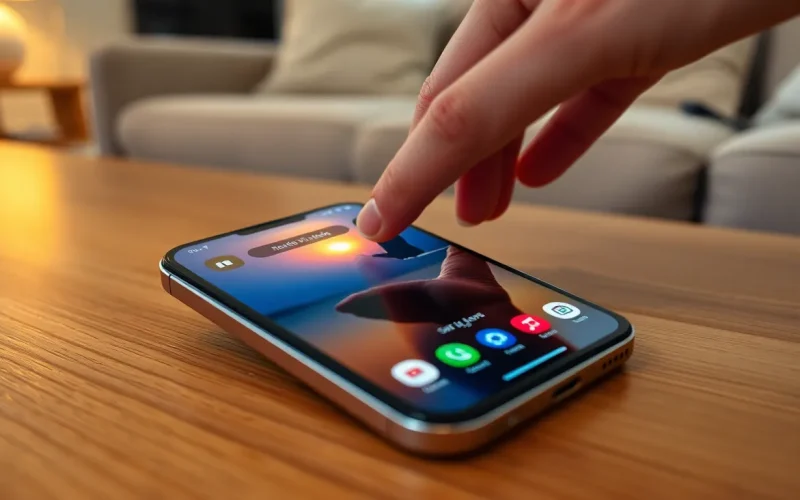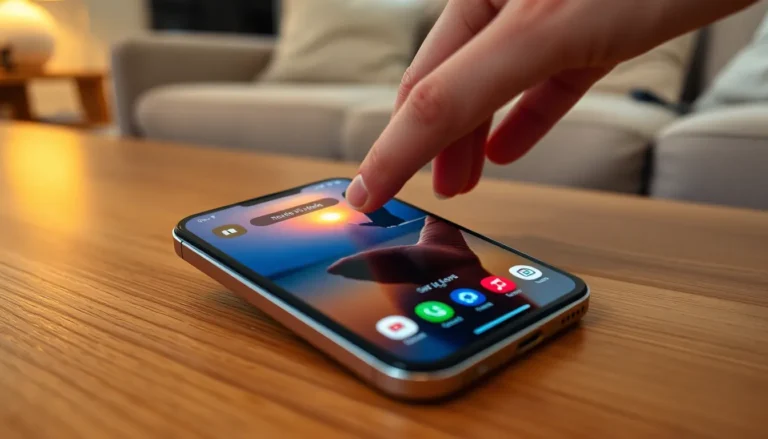Table of Contents
ToggleIn a world where smartphones have become an extension of ourselves, their memory capacity can feel like the ultimate game-changer. Picture this: you’re ready to snap that perfect sunset photo, but your phone screams “storage full!”—a true digital tragedy. With apps, photos, and memes piling up faster than you can say “cloud storage,” understanding smartphone memory isn’t just a techy necessity; it’s essential for modern living.
Overview of Smartphone Memory
Smartphone memory plays a crucial role in the functionality of modern devices. Understanding its types and importance helps users make informed choices.
Types of Smartphone Memory
Smartphones primarily utilize two types of memory: RAM and storage. RAM, or Random Access Memory, aids in multitasking and app performance. It allows users to run multiple applications smoothly at the same time. Storage, known as internal memory, holds photos, apps, and files. Many smartphones offer expandable storage options through microSD cards, enhancing flexibility for users. Flash memory is the technology behind both RAM and storage, ensuring quick access to data.
Importance of Smartphone Memory
Smartphone memory impacts overall user experience significantly. Limited memory can lead to slow performance and hinder application usage. Users may face challenges when trying to save important files or capture moments due to insufficient space. High memory capacity allows for comprehensive multimedia experiences, enabling users to store large files such as videos and games. Prioritizing smartphone memory capacity ensures devices run efficiently and meet the demands of everyday digital life.
Internal Storage Options

Smartphone internal storage options vary significantly, and understanding these options can enhance user experience.
eMMC vs. UFS
eMMC (Embedded MultiMediaCard) and UFS (Universal Flash Storage) represent two different types of internal storage technology. eMMC is common in budget-friendly smartphones, providing adequate speed for everyday tasks. However, UFS offers superior performance, supporting faster data transfer rates, which enhances app loading and overall responsiveness. UFS enables seamless multitasking, making it ideal for users who engage in gaming or content creation. The latest smartphones increasingly utilize UFS, leading to better efficiency and performance.
Capacity Variations
Internal storage capacities range from 32 GB to 1 TB in smartphones today. Lower-end models typically provide 32 GB or 64 GB, suitable for basic usage. Mid-range devices often offer 128 GB, allowing for ample app and media storage. High-end smartphones may come equipped with 256 GB, 512 GB, or even 1 TB, accommodating users who require extensive space for photos, videos, and apps. Opting for larger capacities prevents storage-related issues, ensuring users can capture moments without worry.
External Storage Solutions
External storage solutions provide users with options to expand their smartphone memory significantly. They play a vital role in managing storage constraints and enhancing digital experiences.
MicroSD Cards
MicroSD cards offer a practical way to increase smartphone storage. Many smartphones support microSD slots, allowing users to insert cards ranging from 16 GB to 1 TB. These cards provide flexibility for storing photos, videos, and apps. Inserting a microSD card often boosts both capacity and performance, making multitasking smoother. Different brands offer varied speeds, with Class 10 and UHS (Ultra High Speed) cards delivering faster data transfer rates. Users should consider the storage needs and select compatible cards to ensure seamless integration with their devices.
Cloud Storage
Cloud storage solutions grant convenient access to files from any internet-enabled device. Users can store photos, documents, and backups on platforms like Google Drive, Dropbox, and iCloud. These platforms often offer free basic storage, with paid options available for higher capacities. Storing data in the cloud reduces the reliance on physical memory and helps prevent storage overload. Accessibility is key, allowing users to manage and share files easily. When choosing a cloud service, users should evaluate their storage requirements and internet connection speeds to optimize the experience.
Smartphone Memory Performance
Smartphone memory performance plays a crucial role in device usability. Users experience differences in speed and efficiency based on their device’s memory specifications. RAM directly influences multitasking capabilities. Devices with higher RAM enable smoother transitions between applications. Internal storage speed also varies, particularly between eMMC and UFS technologies. UFS-equipped smartphones display noticeably faster data retrieval and storage processes. Consequently, users benefit from improved app loading times and overall responsiveness.
Smartphone memory impacts device functionality in significant ways. Limited internal storage can hinder the device’s ability to save new files or install updates. When memory fills up, users may encounter frustrating lags in performance. High-capacity storage options, such as 256 GB or more, allow for extensive multimedia storage without worrying about space. Additionally, devices with ample RAM manage multiple applications effectively, enhancing user productivity. By prioritizing memory capabilities, users enjoy a seamless digital experience across various tasks and applications.
Future of Smartphone Memory
Smartphone memory continues to evolve, impacting user experiences significantly. New advancements are on the horizon.
Emerging Technologies
Innovations like 3D NAND technology enhance storage density and speed, making smartphones more efficient. Companies are exploring holographic memory, which promises high capacity and rapid data transfer rates. Solid-state drives (SSDs) have gained popularity, known for their durability and performance. Furthermore, artificial intelligence is being integrated into memory management, optimizing app usage and storage allocation. Emerging technologies focus on increasing both speed and capacity, which is vital for users who rely on their devices for multimedia content and gaming.
Trends in Smartphone Memory Design
Smartphone memory design shifts toward larger RAM and internal storage capacities in response to user demands. Manufacturers are prioritizing UFS technology over eMMC, ensuring faster data access for resource-intensive applications. Modular designs featuring expandable storage options, such as microSD card support, are becoming more common. Additionally, trends indicate an increase in cloud storage integration, allowing seamless access and backup of files. As trends evolve, smartphone memory solutions will continue to shape the user experience, addressing the growing need for extensive storage and efficient performance.
Smartphone memory plays a pivotal role in enhancing the user experience in today’s fast-paced digital world. By understanding the different types of memory and storage options available, users can make informed choices that cater to their specific needs. High-capacity storage not only alleviates frustrations related to running out of space but also ensures devices perform at their best.
As technology continues to advance, the future of smartphone memory looks promising with innovations aimed at increasing speed and capacity. Users who prioritize memory capabilities will find themselves better equipped to handle the demands of modern life, from capturing precious moments to enjoying seamless multitasking. Making the right decisions about smartphone memory can significantly elevate one’s digital experience.





